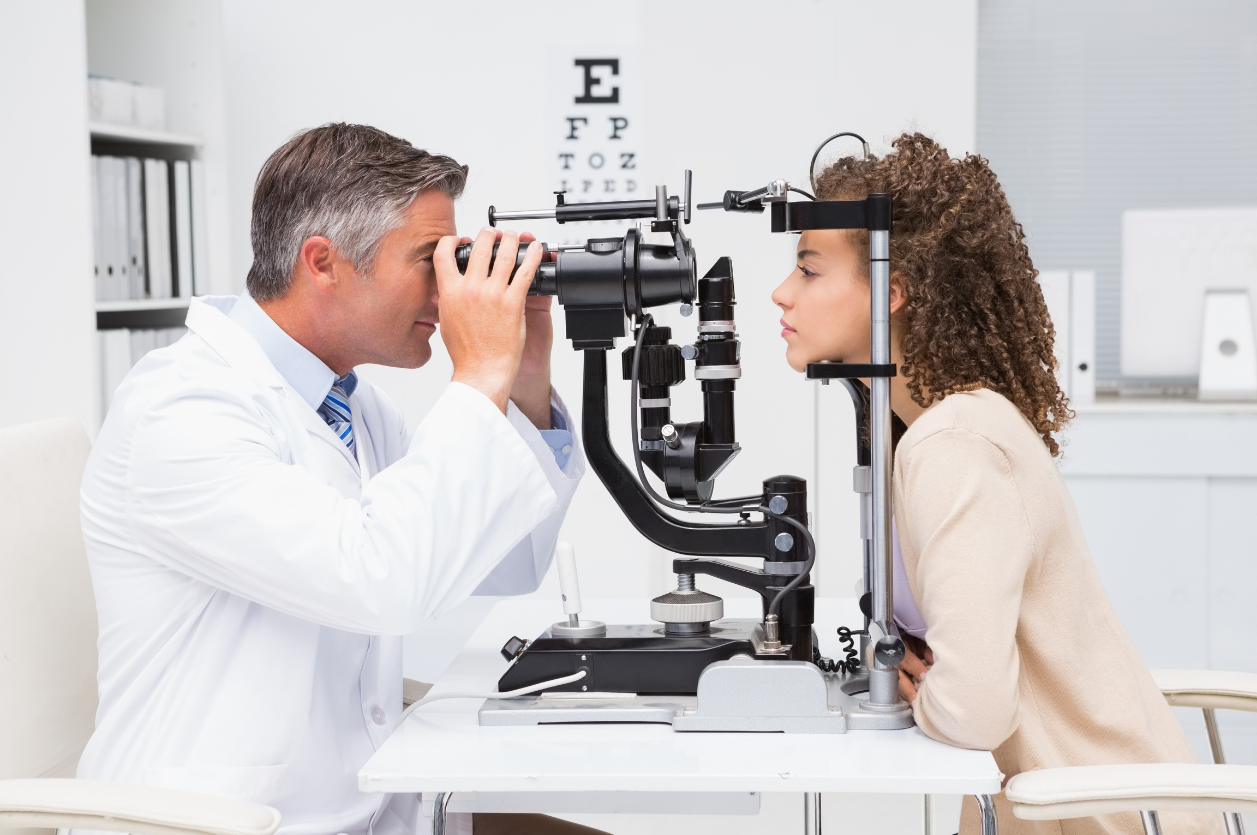Negative Side Effects of Increased Screen Time on Vision Health
Desktop computers. Tablets. Mobile phones. Television.
We have our eyes focused on screens for more hours a day than we may realize. We participate in Zoom meetings, conduct work on our computers and laptops, take online classes, binge TV shows, browse social media and text, text, text.
And it’s not just adults; children are increasingly spending more time staring at screens, too.
As of 2018, the typical adult spent 11 hours of their day staring at a screen. And in 2020, on average, children aged 8 to 12 spend four to six hours a day watching or using screens. Teens spend up to nine hours, according to the American Academy of Child and Adolescent Psychology (AACAP).
The American Academy of Pediatrics’ recommended number of hours of screen time is:
- Children under 2: none
- Children over 2, including teens: two hours per day
There are many problems associated with the overuse of computers and phone screens, but did you know that eye problems can be one of them? While these problems can be benign, some can be serious in the long term and may require a visit to your eye doctor to avoid permanent vision loss.
Blue Light
 Sources of blue light include the sun, digital screens—TVs, computers, laptops, smartphones and tablets—electronic devices, and fluorescent and LED lighting. Blue light from digital screens is the main culprit when it comes to many eye problems. But what is blue light?
Sources of blue light include the sun, digital screens—TVs, computers, laptops, smartphones and tablets—electronic devices, and fluorescent and LED lighting. Blue light from digital screens is the main culprit when it comes to many eye problems. But what is blue light?
Per the Prevent Blindness organization, sunlight is made up of red, orange, yellow, green, blue, indigo and violet light. When these colors combine, it becomes the white light we see. Each color has a different energy and wavelength:
- Rays on the red end have longer wavelengths and less energy.
- Blue rays, which are on the other end of the spectrum, have shorter wavelengths and more energy. Light that looks white can have a large blue component, which can expose your eyes to a higher amount of wavelength from the blue end of the spectrum.
Blue light is necessary for good health as it helps regulate sleep cycles and boosts cognitive function. A deficiency of blue light exposure in children can affect eye development and vision. But too much, and at the wrong time, can have undesirable effects.
How Too Much Exposure to Blue Light Can Affect Your Eyes
Almost all visible blue light passes through the cornea and lens and reaches the retina. Prolonged exposure to this wavelength of light can negatively affect vision and prematurely age the eyes. Research shows that too much exposure to blue light can lead to:
- Digital eye strain. In the short term, blue light from computer screens and digital devices can decrease contrast, leading to digital eye strain. The American Optometric Association's American Eye-Q survey reports that 58% of adults say they have experienced digital eye strain or vision problems they feel are a direct result of too much screen time.
This eye strain, also known as computer vision syndrome (CVS), happens as a result of excessive exposure to blue light and can cause a broad range of discomfort issues. Your eyes are constantly shifting focus and moving while you’re looking at a screen, and the glare and contrast can also be hard on your eyes.
Symptoms of digital eye strain include headaches, blurred vision, dry eyes and neck or shoulder pain.
- Retinal damage. Studies suggest that continued exposure to blue light over time can lead to permanently damaged retinal cells. This can cause vision problems like age-related macular degeneration.
Things You Can Do to Help Prevent Eye Issues Related to Blue Light
There are some universally accepted steps you can take to protect your retinas and avoid problems like computer vision syndrome.
- Learn how to properly sit at a computer. Ergonomics plays a big part in keeping your eyes healthy. Your posture and distance from your computer screen can really help to reduce eye strain. You may not notice an immediate difference, but you’ll feel the effects of proper ergonomics over time.
- Light your workspace (or wherever you’ll be looking at a screen) properly. You should adjust the lighting so that the light level in the room is about equal to how much light your screen is producing. This means avoiding being in a dark room and looking at a bright screen or keeping your screen dark when in a bright room. Contrasting levels of light can strain your eyes faster.
- Practice the 20-20-20 rule. This simple rule can help with eye strain. It suggests that you take a break from looking at the screen every 20 minutes or so to stare at an object about 20 feet away for at least 20 seconds. This exercise helps to give your eyes a break from focusing on a bright screen that is close to you. If you make this rule a habit, you’ll feel the difference in your eyes over time.
- Wear blue light blocking glasses. Blue light blocking glasses have specially crafted lenses that block or filter out the blue light emitted from digital screens, and wearing them can help with eye strain and tiredness. The lenses protect your eyes from glare and can reduce potential damage to your retinas from prolonged exposure to blue light. They’re available with prescription or non-prescription lenses.
While computer vision syndrome or digital eye strain is almost always temporary, some people may start to experience lingering problems if they do nothing about the symptoms or if symptoms continue even after taking the above steps.
If you struggle with digital eye strain, it’s important to visit your eye doctor to find the best solution for you so you can avoid more serious eye problems in the future.
Vision Source Plano Can Help Your Eye Strain Issues
There’s no need to suffer from strained, dry, burning eyes.
At Vision Source Plano, our individualized approach to optometry makes Dr. Malone and staff the eye and vision care providers of choice in the Plano area. We offer the following services:
- Complete eye exams
- Contact lenses, blue-tech blocking glasses
- Glaucoma testing
- Pre/post-operative care
- Dry eye treatment and diagnosis
We also work with other practitioners in the control and treatment of diabetic eye disease.
We offer financing options and work with your vision insurance provider to ensure the best in eye health and vision care.
For a complete list of services, visit our services page, or call our Plano office at (972) 612-2099.
At Vision Source Plano, we are dedicated to providing high-quality optometry services in a comfortable environment.
Call us at (972) 612-2099, or schedule an appointment online today.
Disclaimer: The content on this blog is not intended to be a substitute for professional medical advice, diagnosis, or treatment. Always seek the advice of qualified health providers with questions you may have regarding medical conditions.








